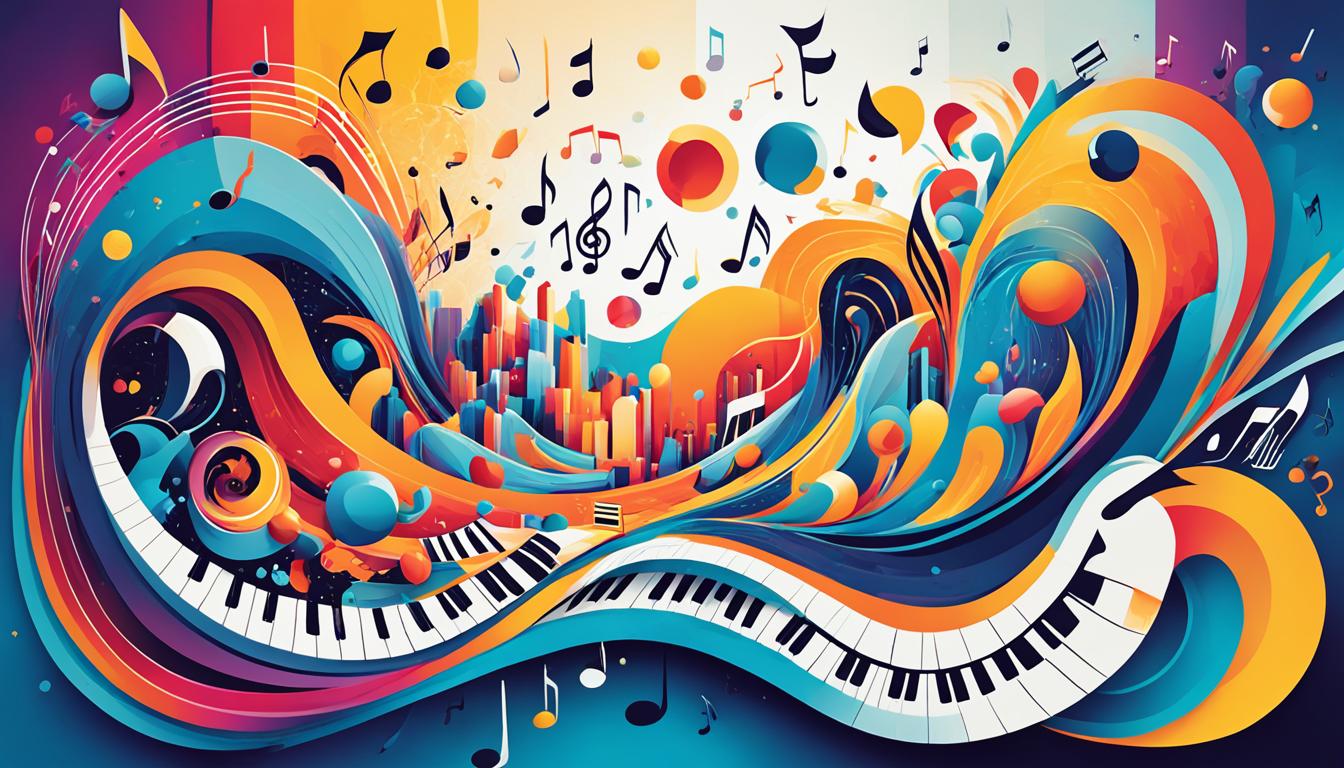Music has the remarkable power to heal, inspire, and uplift our spirits. Whether we are seeking solace in moments of sadness or looking for a source of motivation and joy, music genres and artists offer a diverse landscape of melodies, rhythms, and lyrics that resonate with our emotions and help us navigate through life’s ups and downs. In this article, we will embark on a journey through the world of music genres and artists, exploring the vast array of styles, showcasing the talents of top musicians, and providing inspiration for finding comfort in the richness of different music genres.
From classical compositions that have stood the test of time to contemporary pop hits that dominate the charts, music genres have the power to transport us to different emotional states, connect with our innermost thoughts, and provide a sense of belonging. By delving into the beauty and intricacy of various music genres, we can enhance our understanding of the profound impact that different styles of music have on our lives.
Key Takeaways:
- Music genres and artists offer a diverse range of melodies, rhythms, and lyrics that can provide comfort and solace.
- From classical compositions to contemporary pop hits, the variety of music genres allows us to explore and discover what resonates with our personal preferences.
- Top music artists showcase their talents across different genres, enriching our music experiences.
- Understanding and exploring different music genres can enhance our emotional well-being and provide a guide for creating personalized healing playlists.
- By immersing ourselves in the world of music genres and artists, we can find comfort, inspiration, and a sense of connection in times of need.
The Harmonic Connection: Music’s Impact on Emotional and Physical Well-being
Music has a profound impact on both our emotional and physical well-being. It has been scientifically proven that music can serve as a powerful form of therapy, promoting healing and improving emotional well-being. In this section, we will delve into the therapeutic effects of music and explore its transformative power.
The Science Behind Music as Therapy
The therapeutic effects of music have long been recognized and studied by researchers. Music therapy, a field that utilizes music to address physical, emotional, cognitive, and social needs, has shown promising results in various settings such as hospitals, rehabilitation centers, and mental health facilities. This form of therapy harnesses the power of music to stimulate the brain, evoke emotions, and facilitate communication and expression.
When we listen to music, our brain processes the auditory information and activates various neural pathways associated with emotions, memory, and reward. It stimulates the release of feel-good neurotransmitters such as dopamine, which can lead to improved mood and a sense of well-being. This neural activation can also have a positive impact on physical health, reducing stress, lowering blood pressure, and even boosting the immune system.
Personifying Music’s Transformative Power
Music has the ability to reach deep within our souls, allowing us to connect with our emotions in a profound way. It provides solace, comfort, and empowerment, acting as a powerful tool for emotional release and healing. Different genres and melodies can evoke a wide range of emotions, helping us process and express our thoughts and feelings.
Moreover, music serves as a form of self-expression, enabling us to communicate and connect with others on an emotional level. It can foster a sense of community, provide a voice for marginalized groups, and spark social change. The universal language of music transcends cultural and linguistic barriers, bringing people together in moments of celebration, reflection, and solidarity.
Whether we seek refuge in calming melodies during times of stress or find solace in energetic beats that uplift our spirits, music has a profound impact on our mental health. It has the power to soothe, inspire, and empower us, making it an invaluable tool for emotional well-being.
Embracing Diversity Through Music Genres and Artists
Music is a universal language that transcends borders and cultures. It has the power to bring people together, foster understanding, and celebrate diversity. In this section, we will explore the beauty and richness of diverse music genres and artists from around the world, highlighting the cultural influences that shape their unique sounds.

One of the fascinating aspects of music is its ability to reflect the identity and traditions of different cultures. From traditional folk music to contemporary pop, there is a vast array of music genres that embody the essence of various cultures and create a sense of connection with their roots. Exploring music from different cultures not only expands our musical palette but also broadens our understanding of the world.
Fusion genres, in particular, deserve special recognition for their ability to blend traditional and contemporary styles, creating a harmonious amalgamation of sounds. This fusion of musical influences leads to the birth of unique genres that showcase the seamless integration of diverse cultural elements. Through fusion genres, musicians create a platform for cross-cultural communication and mutual appreciation.
World music is another captivating genre that embraces the diversity of musical expressions across the globe. It encompasses a wide range of traditional and folk music styles from various cultures. From the enchanting rhythms of African drumming to the intricate melodies of Indian classical music, world music showcases the vastness and beauty of different musical traditions.
By embracing diverse music genres and artists, we can celebrate cultural diversity and foster a deeper appreciation for the richness of global musical heritage. Through music, we can bridge cultural divides, break down barriers, and create a sense of unity and belonging. Let us now embark on a journey of exploration, immersing ourselves in the vibrant tapestry of music genres from around the world.
Classical Comfort: How Timeless Tunes Encourage Relaxation
Classical music has long been acclaimed for its ability to create a sense of tranquility and relaxation. The compositions of renowned classical composers, such as Mozart, Bach, and Beethoven, have stood the test of time and continue to provide solace to listeners.
The Legacy of Classical Composers
The works of classical composers have left an indelible mark on the music world. Their timeless melodies and intricate harmonies evoke deep emotions and transport listeners to a state of calmness. By blending complexity with beauty, classical composers have crafted compositions that have become timeless treasures.
Their works have been meticulously crafted, showcasing a mastery of musical composition. The legacy of classical composers continues to inspire and influence musicians across genres, ensuring that the profound impact of their music endures.
Orchestral Influence on Modern Music
Classical music, rich in orchestral arrangements, has had a significant influence on modern music. Orchestral instruments, such as the violin, cello, and piano, have become staples in various genres, infusing them with a touch of grandeur and elegance.
Contemporary artists and composers often draw inspiration from classical compositions, incorporating orchestral elements into their music to create evocative and emotive soundscapes. This blending of classical and modern styles bridges the gap between eras, allowing listeners to experience the timeless beauty of classical music in a contemporary context.
| Classical Composers | Notable Works |
|---|---|
| Wolfgang Amadeus Mozart | Requiem, Symphony No. 40, Piano Concerto No. 21 |
| Johann Sebastian Bach | Brandenburg Concertos, Goldberg Variations, Toccata and Fugue in D minor |
| Ludwig van Beethoven | Symphony No. 9, Moonlight Sonata, Für Elise |
Note: The table showcases just a fraction of the works by these legendary composers.
The Healing Rhythms of Jazz and Blues
Jazz and blues music have a unique ability to express raw emotions and provide a cathartic experience. These genres offer a space for emotional expression and reflection, allowing listeners to find solace and comfort in their captivating rhythms. From the improvisations of jazz to the soulful melodies of blues, these musical styles have a profound impact on emotional well-being and serve as a form of healing through music.
Originating in African-American communities in the late 19th and early 20th centuries, both jazz and blues draw upon a rich cultural heritage. Jazz music emerged from the fusion of African, European, and Caribbean musical traditions, characterized by its improvisational nature and complex syncopated rhythms. On the other hand, blues music, often recognized for its 12-bar chord structure, conveys deep emotions and personal experiences through its poignant lyrics and soulful instrumentation.
The emotional expression in jazz and blues allows listeners to connect with their own feelings and experiences, providing solace and a sense of empathy. The improvisatory nature of jazz encourages musicians to channel their emotions into their performances, creating an immersive and authentic musical experience. In blues music, the expressive vocals and heartfelt melodies provide a cathartic release, allowing listeners to process and navigate their own emotional landscapes.
Research has shown that jazz and blues music can have a positive impact on emotional well-being. The healing rhythms and emotional expression in these genres can reduce stress, alleviate anxiety, and promote relaxation. Listening to jazz and blues can also foster a sense of connection and community, as these genres often serve as a form of shared cultural expression.
Whether it’s the swinging melodies of jazz or the soul-stirring sounds of blues, these genres have the power to touch our hearts and provide comfort in times of need. The healing rhythms of jazz and blues serve as a reminder of the transformative power of music, and their emotional depth allows us to find solace, express our emotions, and embark on a journey of healing.
Country and Folk: Storytelling That Soothes the Soul
Country and folk music have a unique way of telling stories and invoking a sense of connection and nostalgia. These genres encompass heartfelt ballads, foot-tapping anthems, and heartfelt lyrics that resonate with listeners. Whether you’re seeking comfort or finding solace, the storytelling in country and folk music offers a soothing balm for the soul.
The Roots of American Folk Music
American folk music has deep roots that stem from the diverse traditions of early settlers, immigrants, and indigenous communities. It has been shaped by the rich cultural heritage and experiences of different regions across the United States. From traditional Appalachian ballads to protest songs during social movements, American folk music reflects the history, struggles, and triumphs of the nation.
Country Music’s Impact on Mental Health
Country music often addresses themes of resilience, love, loss, and personal struggles, resonating deeply with listeners and providing a sense of emotional catharsis. The lyrics and melodies encapsulate the highs and lows of life, offering comfort and understanding during challenging times. Research has also shown that music, including country music, has a positive impact on mental health, helping to alleviate symptoms of anxiety, depression, and loneliness.

| Benefits of Country Music on Mental Health | Examples of Country Artists |
|---|---|
| Emotional catharsis and release | Johnny Cash |
| Validation of personal experiences | Dolly Parton |
| Connection to a supportive community | Willie Nelson |
| Encouragement for resilience and hope | Carrie Underwood |
Whether you’re listening to the heartfelt lyrics of Johnny Cash, the empowering anthems of Dolly Parton, the iconic tunes of Willie Nelson, or the inspirational songs of Carrie Underwood, country music has the power to heal, uplift, and provide solace.
Rock’s Role in Emotional Release and Empowerment
Rock music has a unique ability to ignite intense emotions, unleash pent-up energy, and empower listeners. From powerful guitar riffs to anthemic choruses, rock genres provide a platform for self-expression and a means to channel emotions. The raw intensity and boldness of rock music make it a powerful medium for emotional release and empowerment.
Rock music has been known to have a significant impact on mental health. The energizing and cathartic nature of rock can uplift spirits and provide a sense of empowerment in listeners. The powerful lyrics and driving rhythms of rock songs often resonate with individuals, offering a supportive outlet for processing emotions and finding solace in challenging times.
Many rock artists use their music as a platform for addressing mental health issues and advocating for self-empowerment. Through their honest and relatable lyrics, they connect with listeners on a deep level, creating a sense of community and understanding. Rock music can serve as a source of strength and inspiration for individuals battling mental health struggles, offering a form of support that transcends words alone.
Whether you’re headbanging to the guitar solos of legendary rock bands or singing along to the anthems of contemporary rock artists, rock music holds a transformative power that can provide emotional release and empower listeners. It allows us to express our innermost feelings, find solace in shared experiences, and embrace the sheer power of music to heal and uplift our souls.
Ambient and Electronic Music: Crafting Soundscapes for Solitude
Ambient and electronic music offer a sonic escape, creating immersive soundscapes that transport listeners to a realm of tranquility and solitude. These genres provide a backdrop for moments of solitude and self-reflection, offering a sanctuary from the noise of everyday life.
Whether you’re seeking soothing music to unwind, meditation music to find inner peace, or simply a serene ambiance to create a calming atmosphere, ambient and electronic music can be profoundly transformative. From ambient drones that envelop you in a cocoon of serenity to pulsating electronic beats that synchronize with your heartbeat, these genres have the power to promote relaxation, encourage contemplation, and induce a meditative state.

The ethereal and atmospheric nature of ambient music makes it an ideal companion for moments of solitude. The subtle melodies and gentle rhythms ease the mind, allowing space for introspection and self-discovery. Whether you’re meditating, practicing yoga, or simply seeking solace in stillness, ambient music provides a soothing soundtrack to enhance the experience.
Electronic music, with its pulsating beats and mesmerizing soundscapes, can transport you to a state of flow and creativity. Its repetitive nature and hypnotic rhythms have been found to induce a trance-like state, aiding in relaxation and deepening focus. Many electronic music artists craft intricate sonic worlds that take the listener on an immersive journey, allowing for a sense of escape and introspection.
Whether you choose to embrace the calming melodies of ambient music or get lost in the captivating beats of electronic music, these genres offer a doorway to solitude and self-reflection. Allow the immersive soundscapes, delicate melodies, and ethereal textures to envelop you in a realm of tranquility, providing solace and comfort in the midst of the chaos of everyday life.
World Music: A Source of Solace Across Cultures
World music is a rich tapestry of diverse genres and cultural influences that evoke a sense of solace and connection across different societies. It transcends geographical boundaries, bridging cultures and fostering unity through the universal language of music. In this section, we will delve into the beauty and diversity of world music, celebrating the fusion genres that break the boundaries of traditional music and exploring the gifts of global melodies derived from non-Western influences.
Fusion Genres – Breaking the Boundaries of Traditional Music
Fusion genres within world music have emerged as dynamic and innovative forms that blend traditional musical elements with contemporary styles. These genres push artistic boundaries, combining different cultural traditions and genres to create captivating and unique sounds. Fusion genres not only serve as a means of artistic expression but also as a powerful force in promoting cross-cultural understanding and appreciation.
“Fusion genres redefine musical conventions, creating a harmonious blend of cultural influences and giving birth to new and exciting musical creations.”
From Afrobeat, a fusion of West African rhythms and American funk, to Bhangra Fusion, a blend of Punjabi folk music and modern dance beats, fusion genres showcase the ingenuity and creativity of musicians who aim to create a global musical language that resonates with audiences worldwide. These genres not only break the boundaries of traditional music but also offer a fresh and unique perspective on cultural diversity and unity.
Gifts of Global Melodies: Exploring Non-Western Influences
World music is enriched by the incorporation of non-Western influences, which bring unique melodies and rhythms to the global stage. The diverse musical traditions of different cultures provide a wealth of inspiration, offering a fresh perspective and expanding the musical palette for composers and artists.
Brazilian bossa nova, with its soft and syncopated melodies, introduces listeners to the rich musical heritage of South America. Indian classical music, with its intricate ragas and talas, showcases the depth and complexity of a millennia-old tradition. Middle Eastern music, characterized by its mesmerizing scales and haunting melodies, captures the essence of a region steeped in history and culture.

The image above illustrates the vibrant fusion of musical styles and instruments that define fusion genres in world music. It represents the blending of cultural influences in a visually appealing and relevant way.
These global melodies serve as musical bridges that connect the world, allowing listeners to experience the richness and diversity of different cultures. They provide solace and comfort by reminding us of our shared humanity, transcending language and cultural barriers.
In conclusion, world music, with its fusion genres and non-Western influences, offers a source of solace and connection across cultures. It celebrates the beauty of diversity and exemplifies the unifying power of music. Through the exploration and appreciation of world music, we can cultivate a deeper understanding of our global community and find solace in the harmonies that connect us all.
Spiritual and Meditation Music: A Gateway to Inner Peace
Spiritual and meditation music serves as a gateway to inner peace, allowing listeners to embark on a journey of self-discovery and mindfulness. In this section, we will explore the role of music in mindfulness and reflection, discussing the calming qualities of spiritual music, the power of chants and mantras, and the grounding and centering effects of specific tones and melodies. Whether you’re seeking moments of tranquility or a deeper connection to your inner self, spiritual and meditation music can provide a sanctuary for introspection and inner peace.
The Role of Music in Mindfulness and Reflection
Music has long been recognized as a powerful tool for mindfulness and reflection. It has the ability to transport us to a state of heightened awareness and presence, enabling us to let go of distractions and focus on the present moment. When we engage with spiritual and meditation music, we create a space for deep introspection, guiding us towards a greater understanding of ourselves and the world around us.
Whether you’re engaging in formal meditation or simply seeking moments of quiet contemplation, music can serve as an anchor, helping you maintain a state of mindfulness. The gentle melodies, soothing rhythms, and ethereal harmonies found in spiritual music create an ambiance conducive to introspection, allowing your thoughts to settle and your mind to find clarity.
Chants and Tones for Grounding and Centering
In addition to its role in mindfulness, spiritual music often incorporates chants and mantras that have been used for centuries to facilitate grounding and centering. Chanting repetitive phrases or sacred syllables can help quiet the mind and bring about a sense of inner stillness. These ancient practices have been found to reduce stress, anxiety, and promote a sense of overall well-being.
Furthermore, specific tones and melodies in spiritual music are carefully crafted to harmonize with the natural frequencies of our bodies, creating a vibrational resonance that promotes balance and alignment. These grounding tones can help us reconnect with ourselves, release tension, and attain a sense of inner stability.
Immerse yourself in the exquisite sounds of spiritual and meditation music, and allow its healing vibrations to guide you on a path of self-discovery and inner peace. Whether you prefer the tranquil sounds of Tibetan bowls, the soul-stirring chants of Gregorian monks, or the serene melodies of nature-inspired compositions, there is a vast array of spiritual music genres to explore.
As you embark on your musical journey, remember to create a peaceful environment, free from distractions, and choose music that resonates with your personal preferences. Dedicate moments of your day to fully immerse yourself in the experience, allowing the music to carry you to a state of tranquility and inner harmony.
| Benefits of Spiritual and Meditation Music | Genres to Explore |
|---|---|
|
|
Conclusion
In conclusion, the transformative power of music genres and artists in finding comfort and solace cannot be overstated. Throughout this article, we have explored the profound impact that music has on our emotional and physical well-being. We have celebrated the rich diversity of music genres and artists, showcasing their ability to transcend cultural boundaries and provide a source of connection and unity.
To fully harness the healing potential of music, it is important to personalize your healing playlist. By curating a collection of songs that resonate with your unique preferences and emotions, you can create a powerful tool for self-care and emotional well-being. Whether you choose soothing classical compositions, the raw emotions of jazz and blues, the storytelling of country and folk, the empowering rhythms of rock, the ambient soundscapes of electronic music, or the cultural richness of world music, your healing playlist can serve as a sanctuary for solace and comfort.
It is also crucial to recognize that the journey with music and healing is an ongoing one. As you continue to explore different music genres and artists, you will uncover new sources of comfort and inspiration. Music has the ability to accompany us through all stages of life, providing support and solace during challenging times and celebrating moments of joy and triumph. So, embrace the incredible world of music genres and artists, and allow the melodies and rhythms to guide you on a path of self-discovery, emotional well-being, and healing.










